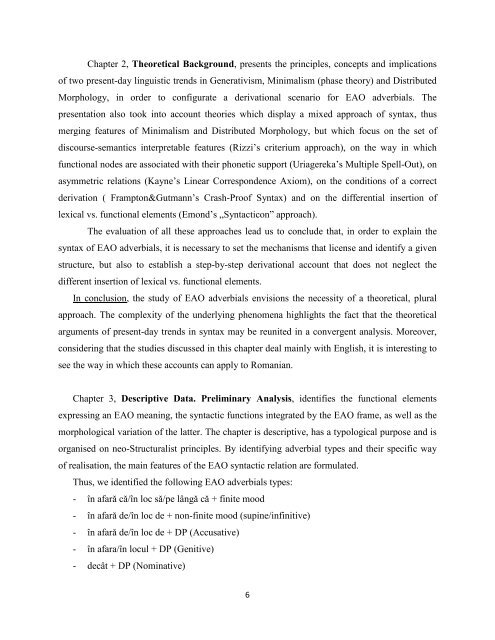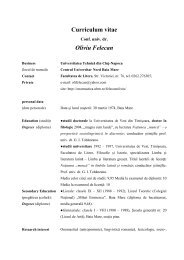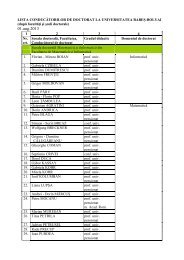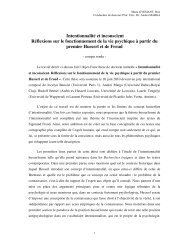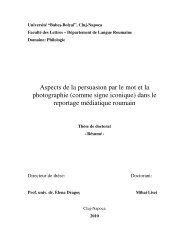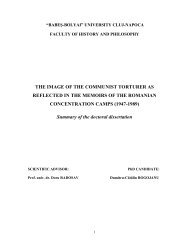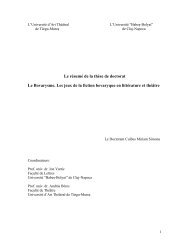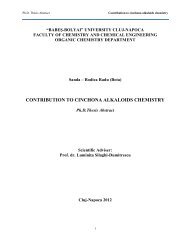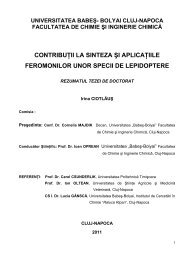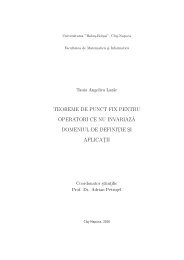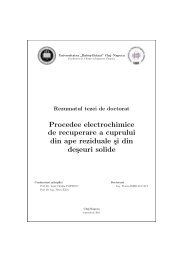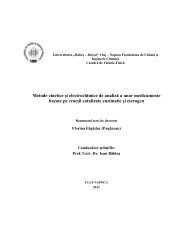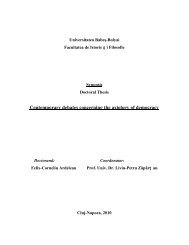ADVERBIAL RESTRUCTURING IN CONTEMPORARY ... - Doctorat
ADVERBIAL RESTRUCTURING IN CONTEMPORARY ... - Doctorat
ADVERBIAL RESTRUCTURING IN CONTEMPORARY ... - Doctorat
Create successful ePaper yourself
Turn your PDF publications into a flip-book with our unique Google optimized e-Paper software.
Chapter 2, Theoretical Background, presents the principles, concepts and implications<br />
of two present-day linguistic trends in Generativism, Minimalism (phase theory) and Distributed<br />
Morphology, in order to configurate a derivational scenario for EAO adverbials. The<br />
presentation also took into account theories which display a mixed approach of syntax, thus<br />
merging features of Minimalism and Distributed Morphology, but which focus on the set of<br />
discourse-semantics interpretable features (Rizzi’s criterium approach), on the way in which<br />
functional nodes are associated with their phonetic support (Uriagereka’s Multiple Spell-Out), on<br />
asymmetric relations (Kayne’s Linear Correspondence Axiom), on the conditions of a correct<br />
derivation ( Frampton&Gutmann’s Crash-Proof Syntax) and on the differential insertion of<br />
lexical vs. functional elements (Emond’s „Syntacticon” approach).<br />
The evaluation of all these approaches lead us to conclude that, in order to explain the<br />
syntax of EAO adverbials, it is necessary to set the mechanisms that license and identify a given<br />
structure, but also to establish a step-by-step derivational account that does not neglect the<br />
different insertion of lexical vs. functional elements.<br />
In conclusion, the study of EAO adverbials envisions the necessity of a theoretical, plural<br />
approach. The complexity of the underlying phenomena highlights the fact that the theoretical<br />
arguments of present-day trends in syntax may be reunited in a convergent analysis. Moreover,<br />
considering that the studies discussed in this chapter deal mainly with English, it is interesting to<br />
see the way in which these accounts can apply to Romanian.<br />
Chapter 3, Descriptive Data. Preliminary Analysis, identifies the functional elements<br />
expressing an EAO meaning, the syntactic functions integrated by the EAO frame, as well as the<br />
morphological variation of the latter. The chapter is descriptive, has a typological purpose and is<br />
organised on neo-Structuralist principles. By identifying adverbial types and their specific way<br />
of realisation, the main features of the EAO syntactic relation are formulated.<br />
Thus, we identified the following EAO adverbials types:<br />
- în afarǎ cǎ/în loc sǎ/pe lângǎ cǎ + finite mood<br />
- în afarǎ de/în loc de + non-finite mood (supine/infinitive)<br />
- în afarǎ de/în loc de + DP (Accusative)<br />
- în afara/în locul + DP (Genitive)<br />
- decât + DP (Nominative)<br />
6


